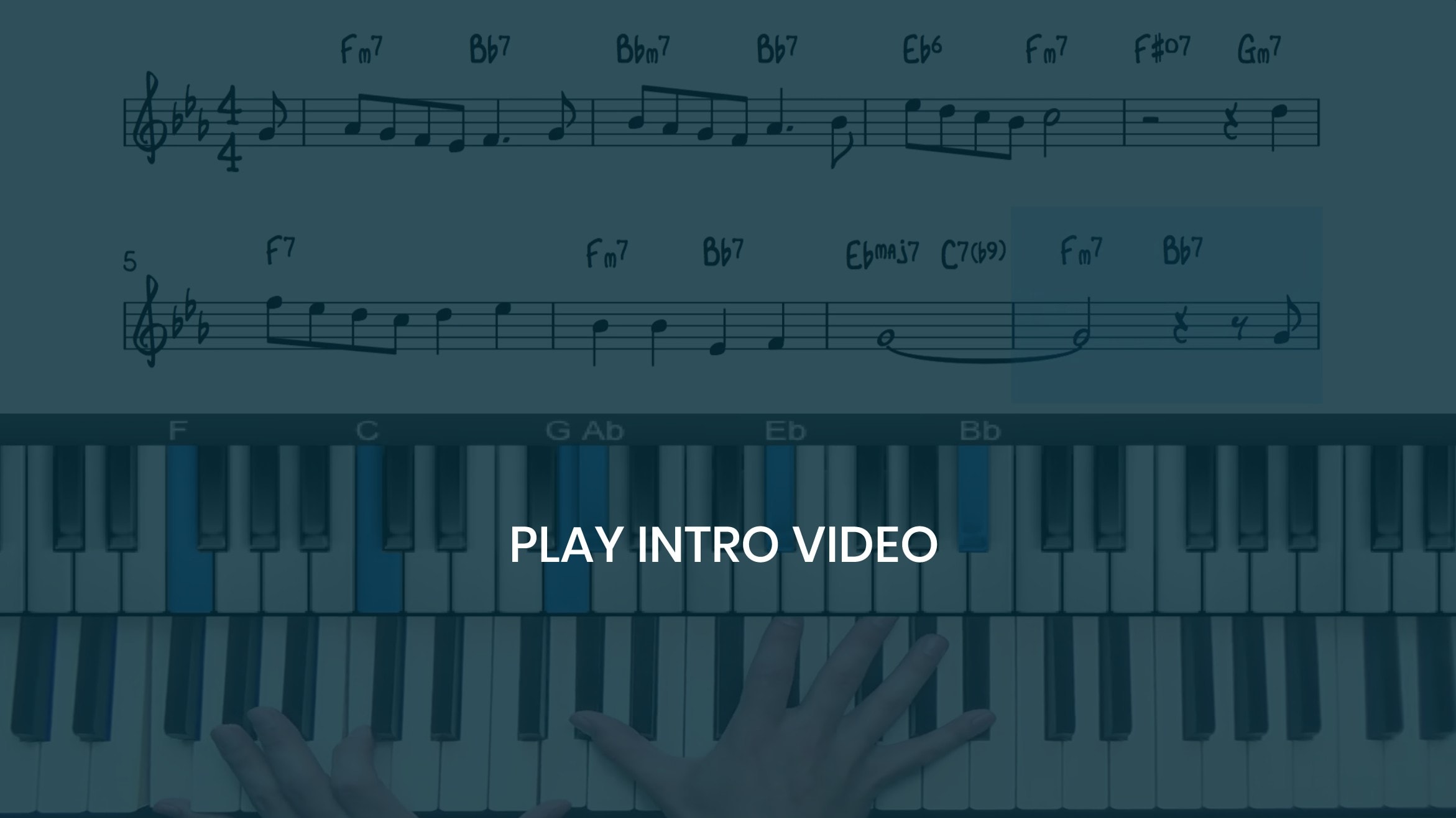Course Lessons
1. Theory Lessons
- 1. 1Jazz Piano Chord Extensions11:42
- 1. 2‘So What’ Chord Voicing12:16
- 1. 3Herbie Hancock Voicing15:12
- 1. 4Kenny Barron Voicing12:27
2. Practice Drills & Exercises
- 2. 1Major & Minor 9th Chord Drills14:05
- 2. 29ths, 11ths, & 13ths Practice Drills09:39
- 2. 3The Major 251: 9th & 13th Chord Drill11:29
- 2. 4How To Learn & Memorise Any Voicing13:43
3. Jazz Standard Application
- 3. 1Misty Jazz Piano Tutorial23:38
- 3. 2Tenderly Tutorial20:25
- 3. 3Over The Rainbow Tutorial21:10
- 3. 4Tenderly Fills & Advanced Voicings24:12
- 3. 5My Foolish Heart Tutorial27:52
Course Info
Unlock This CourseExtended chords are one of the hallmarks of jazz and create the rich sounds and sonorities played by the jazz piano masters. The first area that we need to understand the concept of 9ths, 11ths, and 13ths and how these tones are derived from the major scale.
Memorise The Melody Scale Degree
When learning new chord voicings it’s important to memorise the scale degree at the top of voicing. For example, the top note of the So What Voicing is the 5th, and so when playing from lead sheets, whenever we come across a minor chord (in any key) with the 5th in the melody, the So What Voicing will sound great.
The Kenny Barron Voicing has the 11th on the top so this is a great minor voicing when the 11th is in the melody.
The Herbie Hancock Voicing has the 9th in the melody so this will be a good choice of voicing when you come across the 9th in the melody over a minor chord.
In all lessons in this course we identify the scale degree of the melody note in order to choose the most suitable voicings – always try to do this with any tune you are learning.
Theory & Jazz Standards
We should always practice and apply the theory in context of jazz standards. The jazz standards are the vehicle that we use to understand the theory and when we apply chords and voicings in context of a jazz standard we retain the information much better than from theory drills and exercises.
This course contains 4 jazz standard lessons on the tunes “Misty”, “Tenderly” and ” My Foolish Heart”. In each of these lessons we apply the common extended chord voicings to get you comfortable playing 2-handed extended chord voicings.


